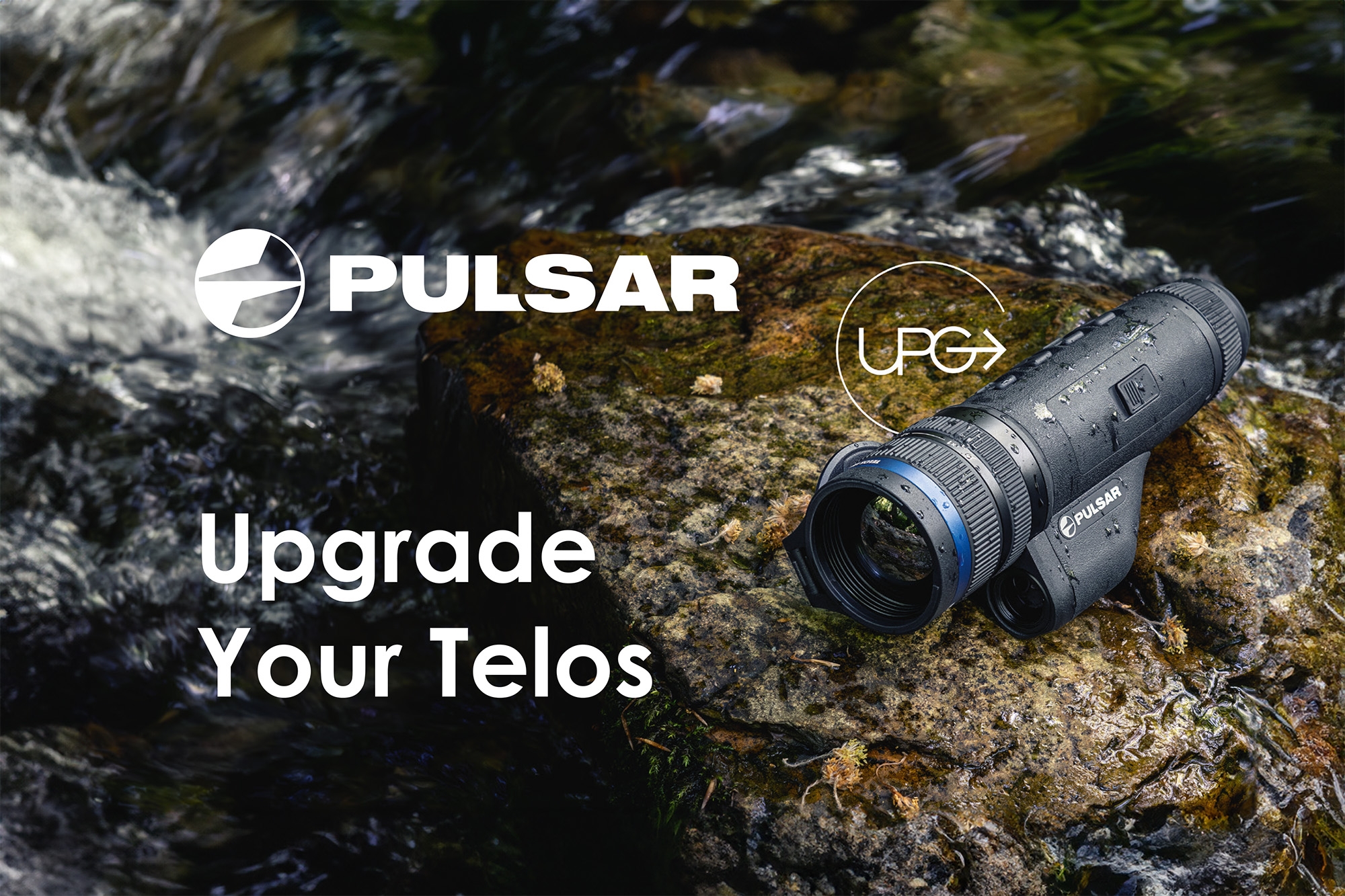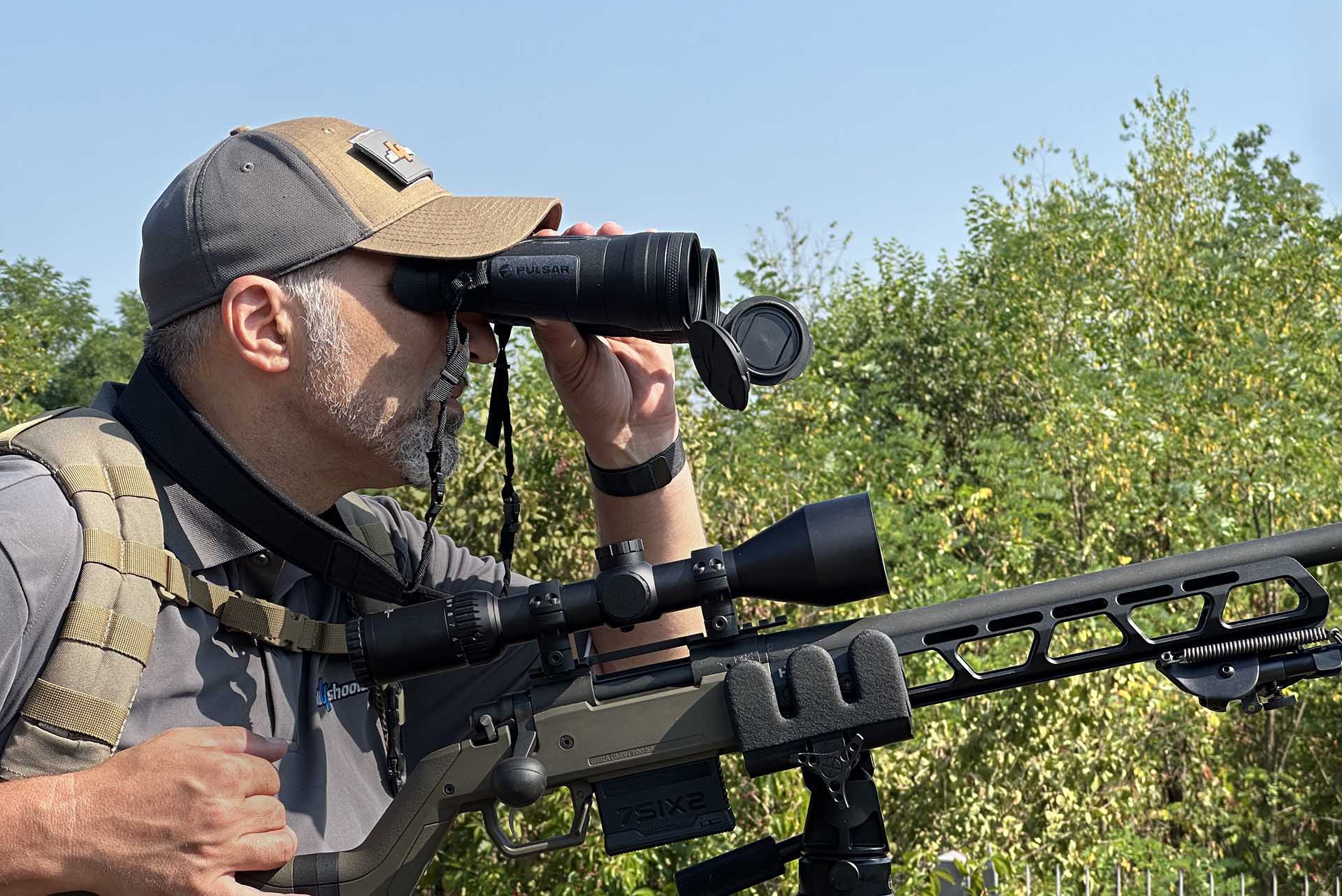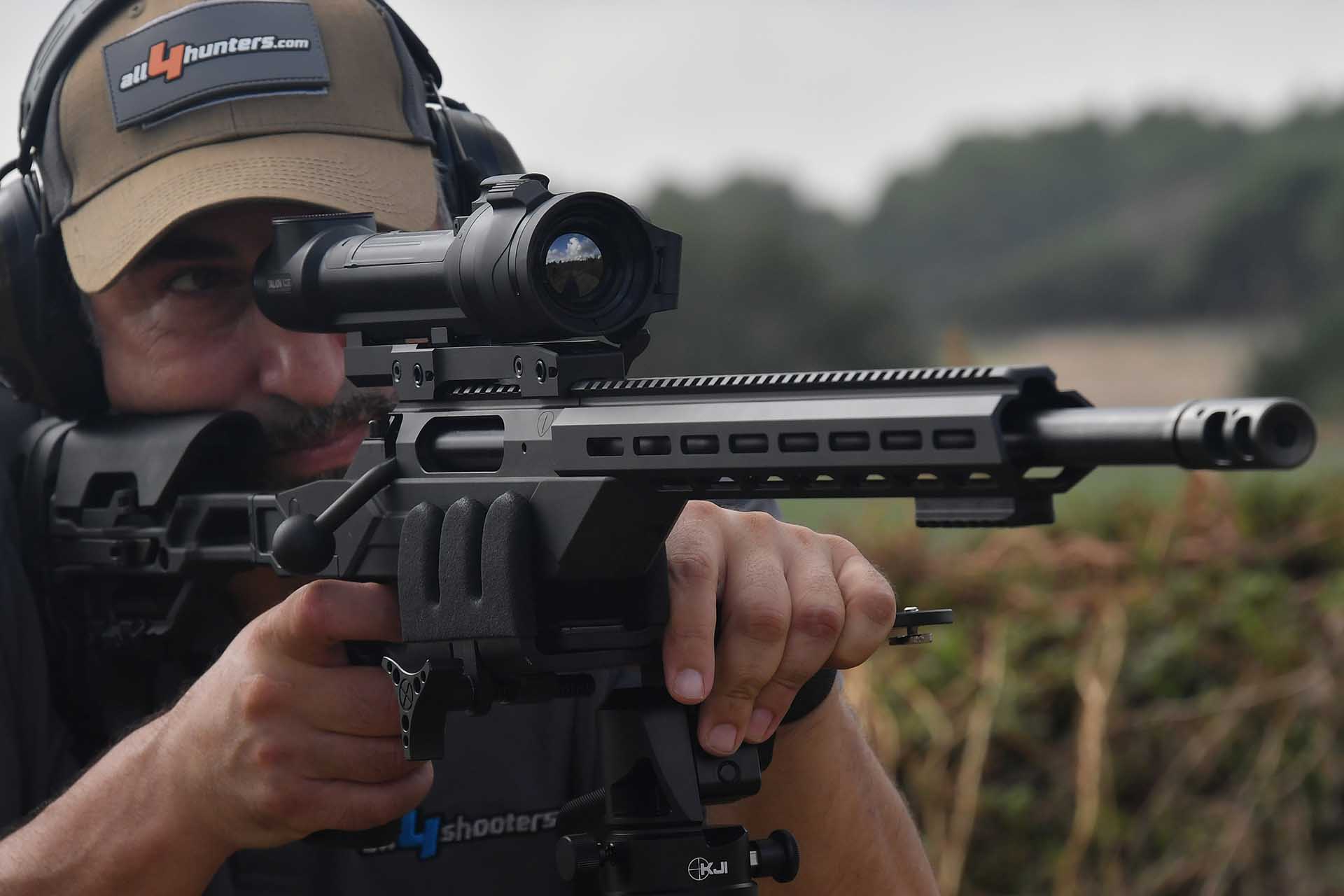Pulsar introduced its first VOx sensor technology based thermal imaging product for the European hunting market with its brand-new Krypton FXG50 Thermal riflescope attachment, a conceptual evolution of the Core clip-on for daytime riflescopes.
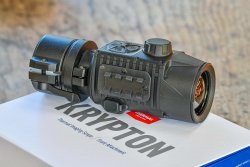
The Krypton is available in two versions, XG50 and FXG50, that differ only for the inclusion in the XG50 of a monocular attachment that turns the clip-on thermal sight attachment in a fully functional hand-held thermal observation monocular with a 5x native magnification; the FXG50 includes instead an adaptor for 42 mm, 50 mm or 55 mm daytime riflescope objective bell diameters.
The Krypton FXG50 features a brand new, US-made VOx - Vanadium Oxide - full frame rate (50hz) sensor, with a resolution of 640x480 pixels and 12 µm pixel pitch. Since the Krypton follows the launch of the Thermion XG50 3-24x42 thermal imaging hunting riflescope in the USA last September, with remarkaby close specs, it is reasonable to assume that the VOx uncooled microbolometer sensor is from the same manufacturer, BAE Systems.
VOx technology in the brandnew Pulsar thermal optics: What are the advantages/differences compared to ASi technology?
Before we delve into the Pulsar Krypton FXG50 review, let’s take a look at VOx technology.
Vanadium Oxide uncooled sensor technology was developed in the late seventies in USA, mostly for military use. Obtaining VOx sensors and cameras outside the US was very difficult at the time, and therefore Amorphous Silicon (ASi) technology was developed in Europe to supply the demand for thermal imaging cameras and sensors in the early ‘90s. Comparing both technologies, it comes out that VOx is more mature, generally offering excellent sensibility, reliability and lower noise, which means better dynamic range. ASi is generally more affordable, stable and tends to maintain its sensibility for longer, more than 15 years. However, recent breakthroughs in ASi technology yielded higher NETD and performance levels, so that – for consumers and low end professional markets – VOx and ASi technologies are today very close.
When we look at a high quality and resolution VOx sensor, such as the 640x480 pixels FPA in the Krypton FXG50, its lower thermal noise level, higher dynamic range and excellent NETD value, added to Pulsar’s own thermal engine, fast Germanium optics and image processing, we see that all contribute to produce outstanding quality images, with excellent contrast, sensitivity and range, that in the case of the Krypton, is 2300 m.
Features of the Pulsar KRYPTON FXG50 Thermal riflescope
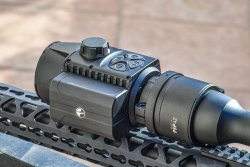
The Pulsar Krypton FXG50 Thermal vision front attachment promises to add Thermal imaging capability to daytime hunting and professional riflescopes, quickly converting the scope to a full feature thermal optic without the need to re-zero or having to replace the scope itself.
We can break down the Krypton FXG50 in basically two elements, the Thermal Camera module itself and the front Quick-release Adaptor system, called by Pulsar the Precise Screen Positioning (PSP) Mechanism. Let’s cover the Imaging module first.
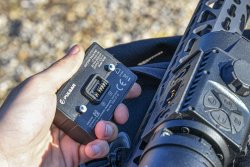
The Krypton FXG50 features a rugged and IPX7 rated waterproof Magnesium alloy housing, and is powered with Pulsar’s proprietary IPS7 Li-Ion Battery Packs for up to 8 hours of use. The objective sports a F50/1.2 lens with high quality Germanium elements, and the control panel include a focus knob and four buttons to operate all functions of the unit.
It is interesting to note that the housing is based on the proven design of the popular Pulsar Forward F455 digital night vision clip-on front attachment. There also is a MicroUSB port and a Picatinny rail – which baffled us a bit, but it could be used for future accessories (a laser rangefinder, maybe?).
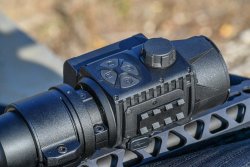
The image is presented on a monochromatic AMOLED microdisplay and relay lens system, which can interface with a daytime optic objective; the Krypton is compatible with 1 to 6x magnification.
The FXG50 also integrates the full feature set of all Pulsar flagship thermal imagers, including Video/photo recording with 16GB internal storage, WiFi connectivity with the StreamVision Smartphone app support and Firmware updates, and all improvements to the Image Processing engine, such as Image Boost technology – a definite upgrade from Core clip-on, and that is not counting the increase in resolution and thermal imaging performance!
The second part of the Krypton system is the mounting, or “docking” as the manufacturer defines it, interface: the Precise Screen Positioning (PSP) Mechanism; this is available in three ranges, covering basically all daytime riflescopes objective bell diameters, from 42 to 55 mm in three sets. We received the 42 mm set, to be used with the Yukon Jaeger 1.5-6x42 mm riflescope Pulsar sent us to test the Krypton.
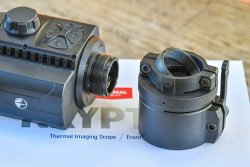
The Quick-release PSP adapter consists basically of a collet locking on the cylindrical surface of the daytime scope objective bell, with interchangeable polymer ring inserts, a threaded interface to mount the Krypton Thermal Camera module, and an innovative spherical joint which allows the display to be easily centered in the riflescope field of view the first time the system is mounted and locked so that it will remain centered every time the Krypton is mounted again.
It is noteworthy that there is no zeroing involved in the installation and use of the Krypton, as the precise alignment of the optical scheme, including sensor, display and optical relay (plus some other electronic “magic” going on inside the unit), takes care of that; the adjustment provided by the PSP Mechanism is only to allow centering of the display.
Test of the Pulsar Krypton FXG50 on a Sabatti ST18 bolt action att ached on a Yukon Jaeger daytime rifle scope for hunting
We tested the Pulsar Krypton FXG50 on a Sabatti ST18 bolt action rifle in 6.5 Creedmoor, using the provided Yukon Jaeger daytime scope. Mounting the whole system on the rifle proved to be extremely simple. We zeroed the riflescope in the usual way at 100 m at the range, and we then mounted the PSP and Krypton Thermal Module to the scope.
We observed almost no shift in POI in respect to POA, although the full resolution of the thermal system is actually visible up 1.8x (rectangular screen perfectly inscribed in the circular FOV), as adjusting the zoom to have a perfectly circular image in the eyepiece obviously results in a 480 pixel diameter image, at 3.5x. Increasing the daytime scope zoom means decreasing apparent resolution, as obviously we’re zooming in a fixed resolution display… However, the overall definition remains surprisingly good: At 6x, we are able to discern individual pixels but the image is absolutely usable for hunting and even professional uses.
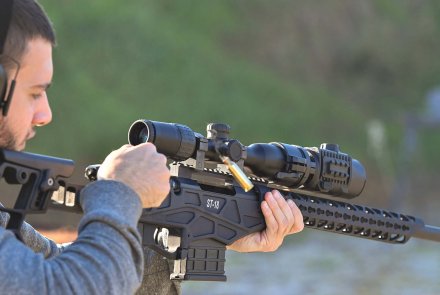
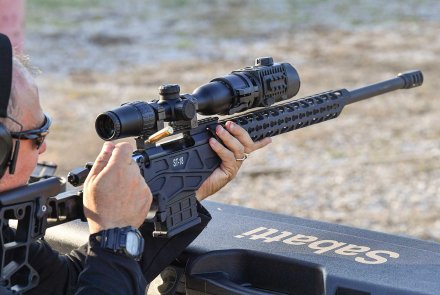
The user interface is very clever, the menu is circular so it can be used up to 3.5x and it stays in the center of the FOV, menu items are limited, and options are not so many as in other Pulsar devices but in this case less is better and we do not get distracted.
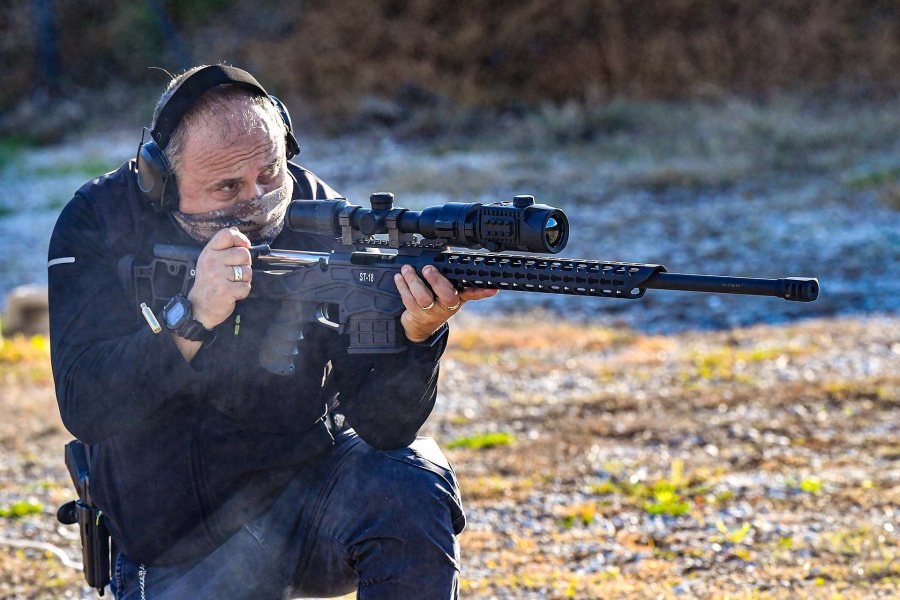
The added weight in front of the gun can be definitely felt, it does make the gun muzzle heavy and changes the handling of the gun but less so than many other competing products. Focusing can be challenging at first, as the knob is quite far, at the very end of the optic and on top of the unit, but after a while it’s not so bad; the same can be said of the small control panel, situated slightly closer in front of the knob.

Performance is excellent, superb even, the spartan interface allows for full concentration on the thermal image; resolution is great as well, and the experience reminds us of a professional Thermal Weapon Sight system. Image quality is top notch, with amazing contrast and smooth grayscale gradients, for an extremely detailed and sharp view. Not only animals and warmer objects are perfectly recognizable, but also the surrounding environment is richly detailed, showing that the sensibility in the smallest temperature difference is on a par or better with the top performing thermal cameras available in the consumer market.
Price is relatively high, 4150 euro for the Krypton FXG50, and of course a daytime riflescope is needed to make the system complete – in this regard, we suggest to note the model of your already owned riflescope(s) to check compatibility and which adapter set to use to mount it on you hunting setup. It is worth mentioning that since there is no zeroing involved, other than display centering in the FOV, the Krypton can be used on multiple guns and riflescopes, just by replacing the internal polymer ring. In case one hunting setup is used, we suggest gluing the ring inside the PSP.
Video: Pulsar KRYPTON FXG50 thermal riflescope attachment
Pulsar Krypton FXG50: Technical features and price
| Manufacturer: | Pulsar - Yukon Advanced Optics ( www.pulsar-nv.com ) |
| Model: | Krypton FXG50 |
| Type: | Thermal imaging daytime riflescope clip-on attachment |
| Objective: | 50mm/F1,2 with coated germanium elements |
| Sensor: | 640x480 pixels, uncooled Vanadium Oxide Focal Planar Array sensor with 12 µm pitch with automatic calibration, 50Hz Full-frame rate |
| IR sensibility: | LWIR (from 7.5 to 13.5 µm) |
| Output: | AMOLED monochrome Microdisplay image relay interface with 1746x1000 pixel resolution |
| Features: | Max. observation range of a 170 x 50 cm rectangular heated object in optimal conditions: 2300 m (illuminates a pixel at this distance |
| Dimensions: | 143 х 93 х 76 mm |
| Weight: | 520 g |
| Mount: | Precise Screen Positioning (PSP) front objective bell interface Mechanism, with |
| Materials/finishes: | Machined magnesium housing, steel threaded adapter interface, tecnopolymer |
| Notes: | Powered by proprietary Li-Ion Pulsar IPS7 Battery Packs, with 6400 mAh capacity, built-in DVR recorder (16GB internal memory), WIFI Stream Vision connectivity, compatible with Android and IOS smartphones/tablets, MicroUSB socket, IPX7 waterproof certified. |
| Price: | Indicative MSRP 4150 euro (price in your region has to be requested to your local distributor) |
For more information about the Krypton FXG50 thermal riflescope attachment, please visit the Pulsar website.








